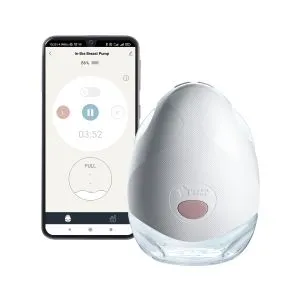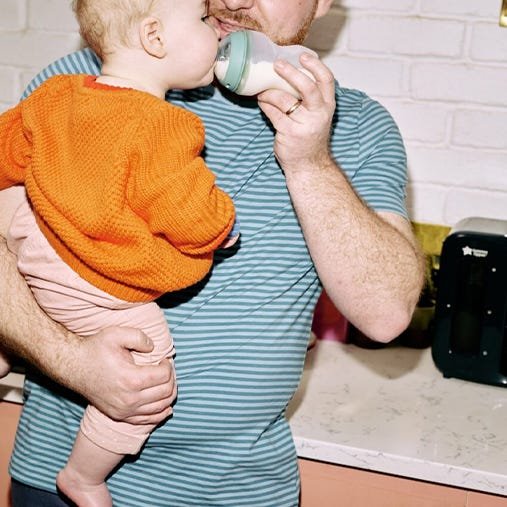Thinking about making positive changes as an individual to look after the environment can be overwhelming, but try not to be so overwhelmed that you end up doing nothing.
Remind yourself that one small step will give you the momentum for the next one. When your little one sees you taking sustainable steps, they'll follow!
We know that the arrival of a baby brings with it a lot of stuff, some of which may not be great for the environment. So, because parents need a lot of things to care for their little ones, we thought it would be a good idea to pull together some sustainable choices and small, realistic adaptations that you can make long the way.
Infant Feeding
Breastfeeding
The WHO and UNICEF recommend that babies should be exclusively breastfed for the first six months of their life, and for parents who are looking to reduce the carbon footprint of their child-raising journey, breastfeeding is a good, cost-effective choice.
In fact in 2019, a research study at Imperial College of London showed that breastfeeding for six months saves 95-153kg of CO2 per baby.
Glass baby bottles
Glass baby bottles are great. They're long-lasting, stain resistant and free from BPA, phthalates, and toxins.
If your glass baby bottles are still in good condition without damage but you no longer need them, you can store them for future children, donate them to charity, or pass them on to another new parent. Remember that whoever uses the bottles next will need to add brand-new teats.
If your glass bottles can't be reused to feed another baby, they can be easily recycled or used in other inventive ways. Once you no longer need your baby's bottles, we've got a few ideas about how you can reuse them...
- Why not use them when you're getting arty to hold water, paint or PVA glue for creative painting sessions? Let your little one release their inner Jackson Pollock!
- Sometimes animal rescue organisations accept old baby bottles and use them to feed newborn critters.
- Most bottles have measurements written on the side, so they can come in handy when you're cooking up a storm in the kitchen!
Muslin cloths
Muslin cloths are a parent's (and a baby's best friend). Used to clean up baby sick, spills, and dribble, they're light, soft, breathable, absorbent, quick-drying, and machine washable.
Try to look for organic cotton muslins. These are produced without any synthetic chemicals, are hypoallergenic and have had much less impact on the environment than the non-organic kind. Some organic cotton is also GOTS-certified. This means that you can be sure it's been organically produced by a socially responsible and environmentally friendly company.
Weaning
Silicone baby bibs
When you begin your weaning journey, silicone bibs can be really handy. They're easy to clean without the need for the washing machine, and they're durable, too. So they can be handed down or passed on from one little one to the next.
Bamboo tableware
In the past, plastic has been the go-to material for brands who make baby tableware. But other, more eco-friendly options are now available, such as bamboo.
Bamboo (unlike plastic) is biodegradable and doesn't contain any of the toxins and chemicals used to make some kinds of plastic. It's also very durable, and a natural, renewable resource - no fossil fuels required!
Puree your own fruit and veg
Making your own baby food using a blender means less single use plastic packaging to deal with. Most supermarket-bought baby food now comes in plastic pouches that can be difficult to recycle, rather than the old school mini glass jars.
This is also a great step to take because...
- When it comes to homemade baby food, you can serve up nutritious and delicious meals and broaden your baby's taste palate by experimenting and pureeing whichever fruits or vegetables you like!
- Making your own baby food is generally cheaper, particularly is you buy and cook the in bulk and the stored in the freezer.
- When making homemade food, you don't have to wonder how long it was sat on the supermarket shelf. Plus, it tastes fresh, and you know exactly what your baby is eating.
If you have some outdoor space at home and are feeling green fingered, you could try growing some veggies yourself!











